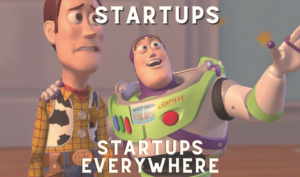In the fast-paced world of media and public relations, the strategic use of exclusives—granting one reporter or publication sole access to a story—can be a game-changer. This often overlooked approach is a cornerstone of savvy PR strategies and is vital in navigating complex media landscapes.
Why opt for an exclusive? In certain situations, it can mean the difference between a story that resonates with your audience and one that misses the mark. Exclusives aren’t just about limiting access; they’re about crafting the narrative, controlling the tempo of the story, and building relationships with key media players.
Let’s dive into the art of the exclusive. We’ll explore 3 different scenarios where this tactic shines: from handling sensitive announcements with finesse to leveraging exclusives in less newsworthy situations. We’ll also tackle instances where an exclusive can help maintain minimal yet strategic coverage, balancing the need for publicity with the desire for discretion.
You have sensitive news to announce and want to make sure you land it right.
Reporters tend to iterate on news already published. If they see an article freshly published on a given topic with a neutral to positive tone, the chances of them taking a similar stance are higher.
For example, if you are announcing a follow-on funding round and you are worried about reporters interpreting this negatively – such as your business running out of cash, or not meeting growth expectations and needing extra funding to get there. In an instance like this, giving the story to one reporter can be a great way to offset that concern and keep control of the message. You can condition the exclusive on the reporter accepting an interview, which will give you a chance to discuss the genuinely positive reasons for taking a follow-on round such as opening up the capital to a famous investor, exceeding growth expectations and needing more cash to sustain the growth pace, etc.
Your news isn’t that big or the story lacks a strong local angle
Say you raised a €3 million or €4 million Series A round (which will compete with bigger rounds being announced that day or week), or say you are an Italian company with clients in France but no local presence there, and you really want/need coverage in France. Both of these are great cases for negotiating an exclusive. In situations like this, a great way to approach media outreach is to reach out to one reporter only and say “I realize the round isn’t that big/I’m aware there are no operations in France,” but I will give you the exclusive on the news. This can tip things in your favour, allow you to land the story and distribute the press release more broadly once the exclusive article is published.
You need to get the news out but you really don’t want that much attention or coverage.
In some instances, there are reasons for your company to secure coverage (such as investor pressure, or legal reasons), but you want to keep the coverage as minimal as possible.
In cases like these, give the exclusive to one reporter only, and don’t distribute the press release any further after that. This will allow you to minimize the coverage, and control any inbound requests from reporters once the exclusive has been published.
To sum up, using exclusives effectively is a key skill in public relations. They provide a way to manage your story carefully, build strong relationships with the media, and ensure your message is conveyed correctly. Exclusives are particularly useful for handling sensitive information, guiding media narratives, and achieving the right level of coverage.
It’s important to remember, however, that exclusives are not always the best approach. They should be used thoughtfully, considering the specific needs of your situation and the dynamics of the media landscape. When used wisely, exclusives can be an invaluable part of your communication strategy.
We hope this is helpful. As a segue to this piece, we’ll do an article about when not to use exclusives, as they can sometimes be counterproductive or reduce the amount of coverage your company secures. Keep your eyes peeled for it in the coming weeks!
- SEO Powered Content & PR Distribution. Get Amplified Today.
- PlatoData.Network Vertical Generative Ai. Empower Yourself. Access Here.
- PlatoAiStream. Web3 Intelligence. Knowledge Amplified. Access Here.
- PlatoESG. Carbon, CleanTech, Energy, Environment, Solar, Waste Management. Access Here.
- PlatoHealth. Biotech and Clinical Trials Intelligence. Access Here.
- Source: https://www.eu-startups.com/2023/12/mastering-the-art-of-media-exclusives-when-and-how-to-negotiate-one/
- :has
- :is
- :not
- :where
- $UP
- a
- About
- accepting
- access
- achieving
- Advertisement
- After
- allow
- already
- also
- always
- amount
- an
- and
- Announce
- announced
- Announcements
- Announcing
- any
- approach
- ARE
- Art
- article
- AS
- attention
- audience
- aware
- balancing
- BE
- been
- being
- BEST
- between
- Big
- bigger
- both
- broadly
- build
- Building
- business
- but
- CAN
- capital
- carefully
- cases
- Cash
- certain
- Chance
- chances
- clients
- coming
- Communication
- company
- compete
- complex
- Concern
- condition
- considering
- control
- controlling
- conveyed
- cornerstone
- correctly
- counterproductive
- coverage
- day
- desire
- difference
- different
- discretion
- discuss
- distribute
- dive
- do
- Dont
- dynamics
- effectively
- ensure
- etc
- example
- Exclusive
- Exclusives
- expectations
- explore
- extra
- Eyes
- famous
- fast-paced
- Finesse
- For
- France
- from
- funding
- Funding Round
- further
- game-changer
- genuinely
- get
- Give
- given
- Giving
- great
- Growth
- Handling
- Have
- help
- helpful
- higher
- hope
- How
- How To
- However
- HTTPS
- i
- if
- important
- in
- information
- instance
- instances
- Interview
- into
- invaluable
- investor
- IT
- Italian
- just
- Keep
- Key
- Land
- landscape
- Legal
- less
- Level
- leveraging
- like
- local
- maintain
- make
- manage
- mark
- Mastering
- mean
- Media
- meeting
- message
- million
- minimal
- minimize
- misses
- more
- much
- NARRATIVE
- narratives
- navigating
- Need
- needing
- needs
- negatively
- Neutral
- news
- newsworthy
- no
- of
- offset
- often
- on
- once
- ONE
- only
- opening
- Operations
- or
- out
- outreach
- Pace
- part
- particularly
- piece
- plato
- Plato Data Intelligence
- PlatoData
- players
- positive
- possible
- pr
- presence
- press
- Press Release
- pressure
- provide
- public
- Public Relations
- Publication
- publicity
- published
- raised
- reach
- realize
- really
- reasons
- reduce
- relations
- Relationships
- release
- remember
- reporter
- requests
- resonates
- right
- round
- rounds
- running
- savvy
- say
- scenarios
- secure
- Secures
- see
- sensitive
- Series
- Series A
- series a round
- shines
- should
- similar
- situation
- situations
- skill
- some
- sometimes
- specific
- stance
- Story
- Strategic
- strategies
- Strategy
- strong
- such
- sum
- sure
- tackle
- taking
- Tempo
- tend
- that
- The
- The Capital
- Them
- There.
- These
- they
- things
- this
- tip
- to
- TONE
- topic
- use
- used
- using
- vital
- want
- Way..
- week
- when
- which
- will
- wisely
- with
- world
- worried
- yet
- you
- Your
- zephyrnet













